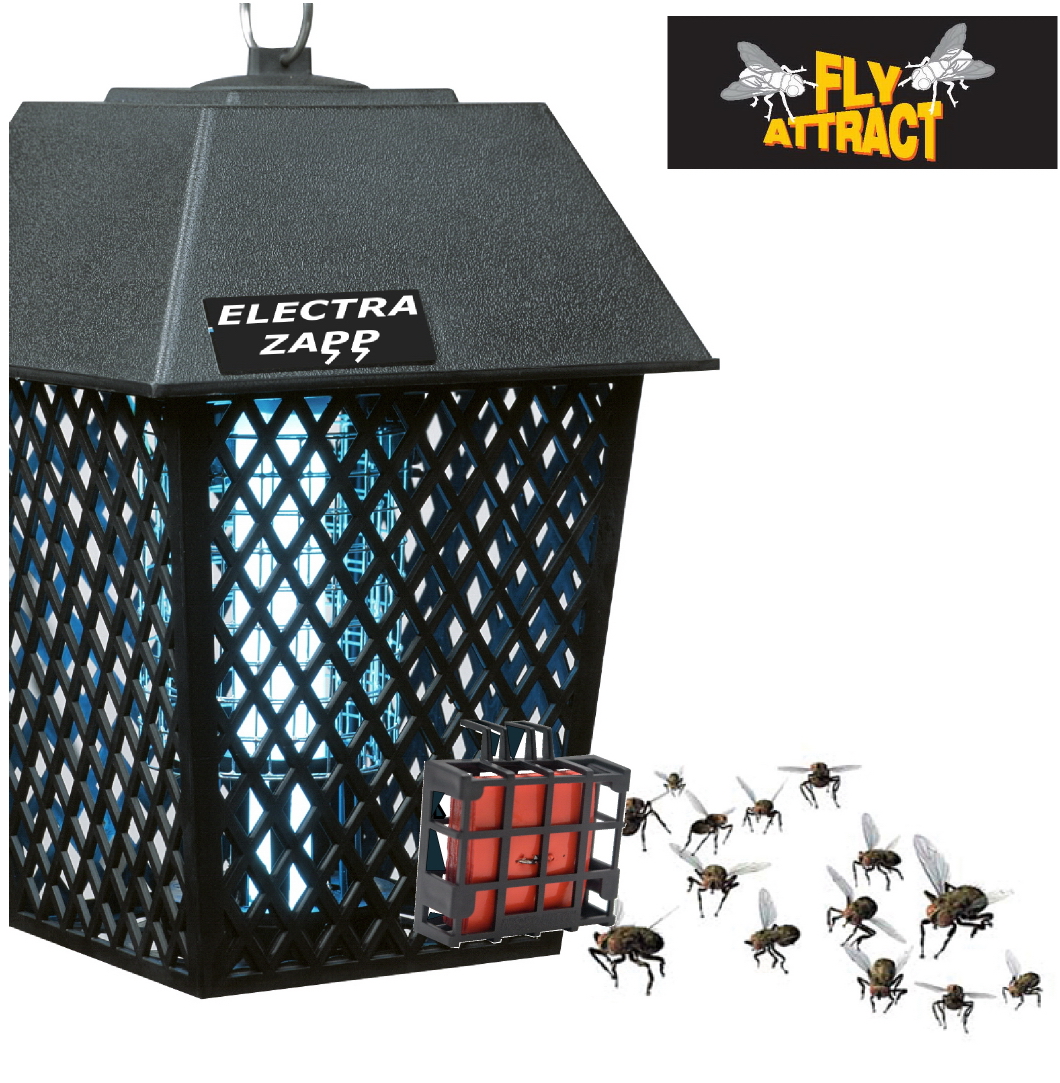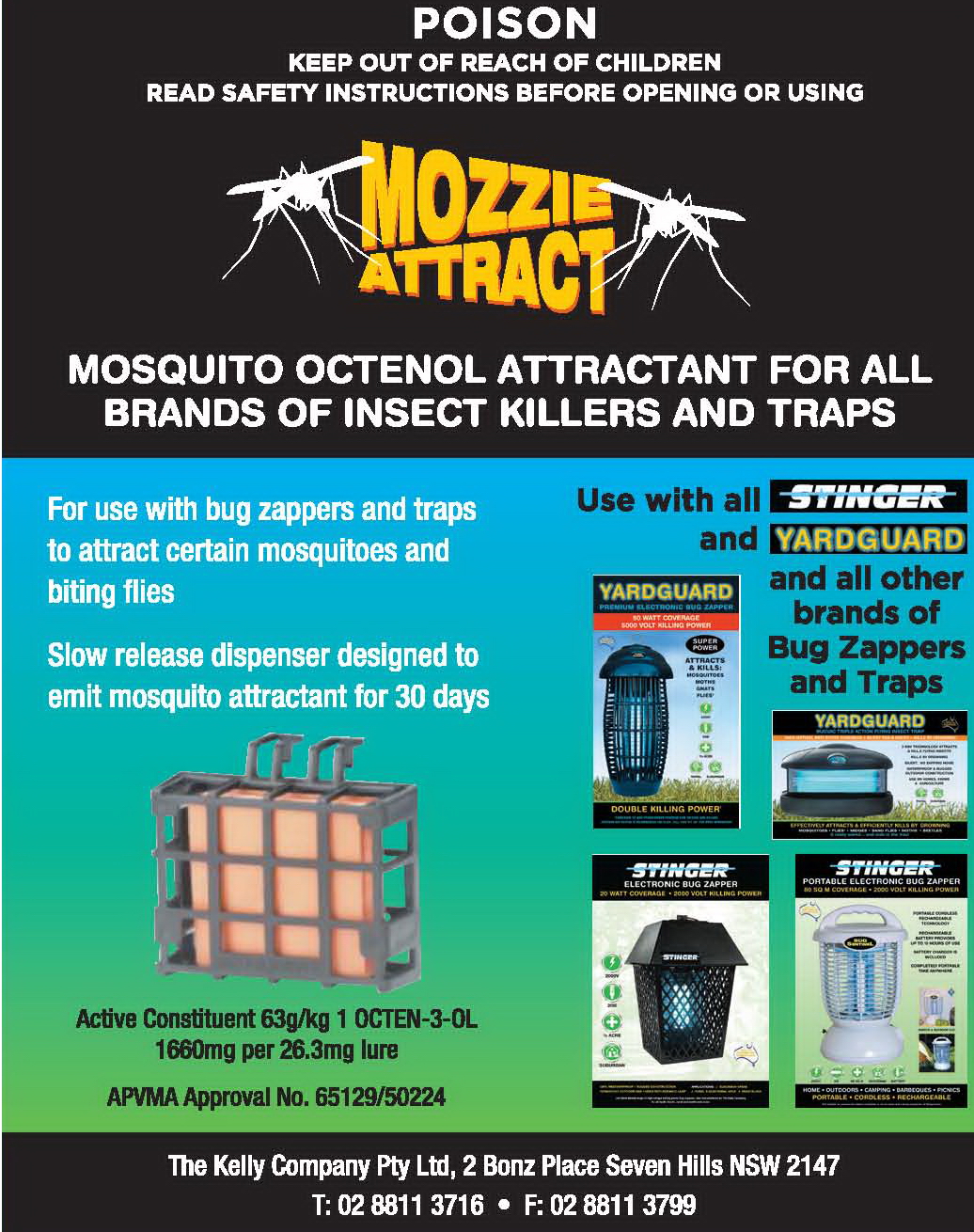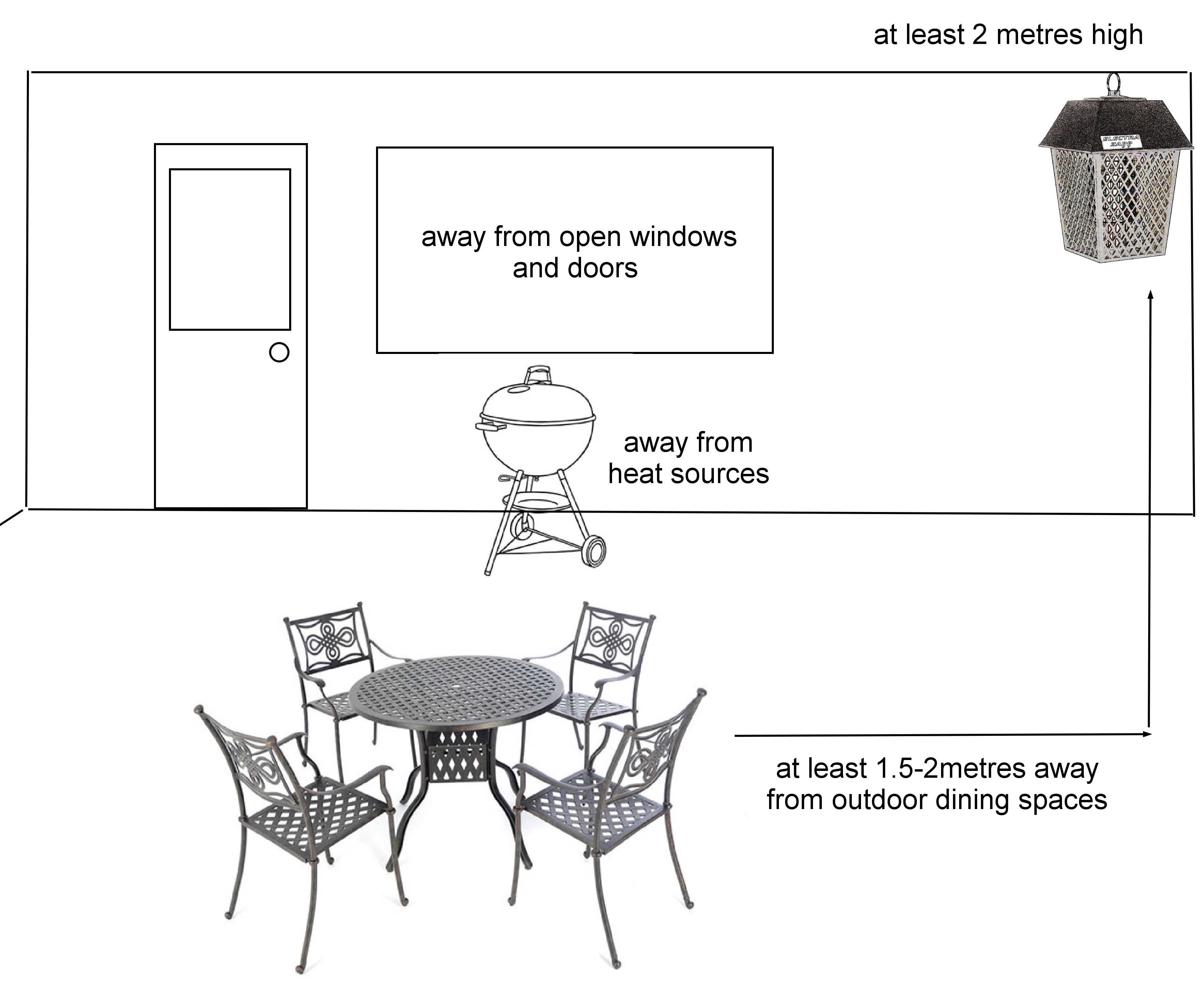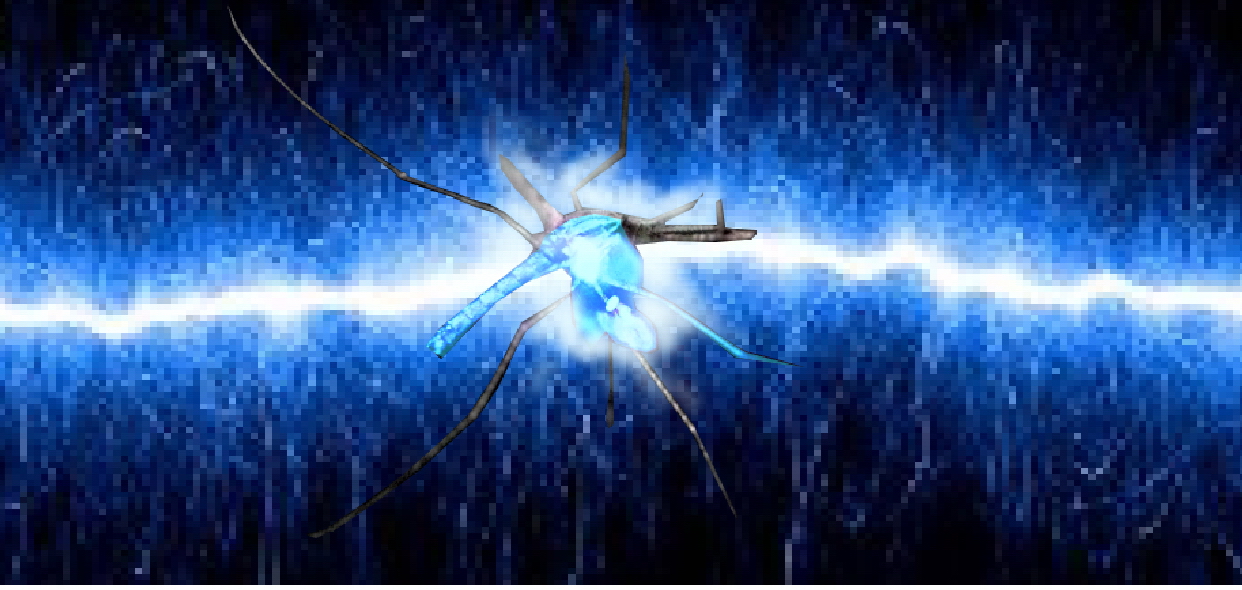
NEW PRODUCT ALERT!!!!! FLY ATTRACT LURE
New Fly lure arrives just in time for summer. We are excited to launch an addition to our range of insect lures, the Fly Attract

Flying insects are a pest we encounter every day, but more often throughout summer and spring. They bite us, land on our food and make a general nuisance of themselves. They can also transmit Murray Valley encephalitis, Ross River fever, Barmah Forest virus and dengue virus. Flying insects make us prisoners in our own homes as we find ways to avoid them. We close doors, stay inside, cover ourselves in sprays and lotions to beat the insects. This isn’t how we should be spending our summer days and nights. An electric bug zapper can help take back your garden, outdoor living areas and assist in protecting your family from mosquito transmitted diseases.
To answer this, we need to break the question down into two sections.
An illuminated ultra violet globe is at the centre of your electric bug zapper. Its purpose is to attract light sensitive insects. As insects fly towards the light source, they pass through an electrified grid killing them instantly.
 Attract mosquitoes and other less light sensitive insects to a bug zapper using specialised lures. Mozzie Attract is an octenol lure created to entice mosquitoes and midges to the bug zapper. Octenol is a scientifically proven slow release (30 day) mosquito lure. It works by mimicking human sweat to attract mozzies to the electrified killing grid.
Attract mosquitoes and other less light sensitive insects to a bug zapper using specialised lures. Mozzie Attract is an octenol lure created to entice mosquitoes and midges to the bug zapper. Octenol is a scientifically proven slow release (30 day) mosquito lure. It works by mimicking human sweat to attract mozzies to the electrified killing grid.
A similar lure for household flies is Fly Attract. This lure uses a food-based attractant to lure flies to a bug zapper. Supplied as a slow release (30 day) impregnated pad in a reusable cage, it is new and available soon. Alternative methods of attracting flies can be as simple as smearing honey and sugar on the outside of your bug zapper cage and hanging a stocking with mince meat or canned cat / dog food off the cage.
Now that you understand how a bug zapper works, we can look at which bug zapper is most suitable for your household. Most people select a bug zapper based on the globe wattage, but this can lead to all sorts of problems.
All bug zappers use a high voltage transformer or Printed Circuit Board (PCB) to create electricity on the killing grid, this power will have a direct effect on which bug zapper is most suitable for your home.

Let’s first look at a bug zapper powered by a high voltage transformer, examples are the Premium Yard
Guard 30 watt and Premium Yard Guard 50-Watt bug zapper. An outdoor high voltage transformer equips the grid with a zapping capacity of 5000 volts. Pairing a high voltage transformer with a 30 watt or 50 watt globe and a large size grid creates a purpose designed bug zapper for households situated on semi-rural/rural blocks, near lakes, rivers or damns or with insect populations.
A high voltage transformer supplies constant power to the killing grid which will zap every insect flying through the grid. The high power explodes most insects upon impact and will reduce the likelihood of any insects making an escape. Grid size is also important when considering a transformer powered bug zapper. A large grid will provide a greater killing area, reducing the likelihood of any insects getting away.
Both 30 watt and 50 watt globes attract bugs over a 1 acre and 1.5 acre are respectively making high wattage bug zappers more suitable for big areas. By purchasing a bug zapper that has a 50W globe, but only a 2000V killing grid, you risk overloading the killing grid as the zapper doesn’t have the capacity to kill every bug, potentially blowing the printed circuit board.
Then why would you purchase a bug zapper that is powered by a printed circuit board?
It is all about location, location, location. A PCB powers the 20-Watt Stinger Bug Zapper with a 2000 volt killing grid. The circuit board must recharge every time a bug is zapped. This occurs in a milli second, but without a continuous zap, this bug zapper is not suitable for large size insects, large populations of insects or general use on rural and semi-rural households. The lower power PCB bug zapper is purpose designed for suburban houses, small blocks, balconies or apartments. These locations don’t often require high wattage globes, killing grids with massive surface area or a continuous powerful 5000V grid. Globe wattage again isn’t an important factor in selecting the bug zapper that is right for your home. A 20W globe will attract insects over a half acre (unobscured), our 40W Stinger is useful for protecting a larger area (up to 1 acre) where insect quantities are

Do not position a bug zapper on or above an outdoor dining setting. A bug zappers purpose is to attract bugs to the zapper. If it is incorrectly positioned, it will only attract more insects to its location. The best place position for your bug zapper is as far away from your relaxing space as possible. So if your dining table is on a patio, position the bug zapper at least 1.5 metres away from the table. If the bug zapper is weatherproof (All stinger and Yard Guard 240V units are rated IPX4), they can be installed in the garden on on an awning, just ensure the plug is undercover.

New Fly lure arrives just in time for summer. We are excited to launch an addition to our range of insect lures, the Fly Attract

Summer is fast approaching and to prepare for the sudden onslaught of bugs, we have prepared some safety tips to ensure your bug zapper works

Flying insects are a pest we encounter every day, but more often throughout summer and spring. They bite us, land on our food and make